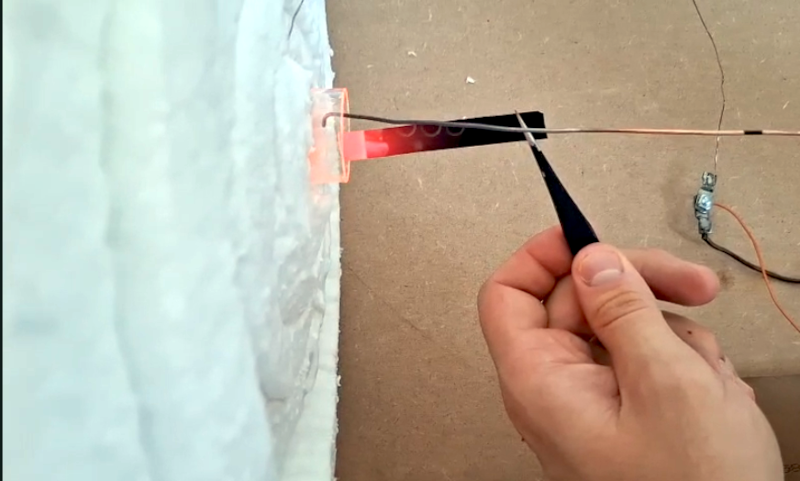We aren’t sure what [theglassman] is working on, but based on his recent projects, we think it is probably something interesting. He’s been decapping ICs, growing oxide on silicon substrates, and has built a tube furnace capable of reaching 1200 °C.
What would you do with something that can melt cast iron? We aren’t sure, but maybe you’ll tell us in the comments. We do have a fair idea of what [theglassman] is doing, though.
The core of the oven is a quartz tube. Insulation is via refractory cement and alumina ceramic wool. The heating itself is classic Nichrome wire and a tiny thermocouple. The real key, though, is to the proper controller. [theglassman] suggests a ramp/soak controller. These allow you to program sequences that heat up and then stop, which, if done properly, can prevent your fragile quartz tube from cracking.
Naturally, you need the tube furnace to grow oxides on silicon. It is less clear why he’s decapping ICs. We were nervous about his process of boiling down sulfuric acid (fuming nitrate works better, anyway, if you just want to remove the epoxy). If you want to remove everything like he does, sodium hydroxide will also work well.
Obviously, we need to keep an eye on [theglassman]. We are curious what he’s working towards. Maybe making a custom transistor? Or, dare we hope, a homemade IC?
















“Obviously, we need to keep an eye on [theglassman].”
…from a safe distance and with large, solid concrete structures to duck behind at a moment’s notice, apparently!
“What would you do with something that can melt cast iron?”
Speaking only for myself, if I had something that could melt cast iron I’d melt cast iron.
Nooooo! Not in this furnace!
You would NEVER get it back into condition for silicon.
Years ago, I had a fun(?) week replacing the MD heating element for a zone of one furnace in my lab. 0 stars. Do not recommend.
just dont try to melt forged iron. /s
“what would you do with something that can melt iron?”
I’ve always been curious about why these types of things don’t use an induction coil heating or a magnetron and heatsink. Aside from cost, is there something special about using nickel-chromium wire?
An induction coil requires a metal target to heat. That limits your furnace temperature to the operating temperature of the metal jacket. Magnetrons have their own host of issues and limitations. Neither option is as cheap or simple to implement as resistive heating elements which get the job done just fine.
Nichrome wire gets you 1000°C (1850°F) to 1250°C (2280°F). Need hotter? Molybdenum disilicide heating elements typically operate in the range of 500°C to 1900°C (932°F to 3452°F).
I’m curious on the choice of furnace tubes, I would have chosen alumina tubes. There’s obviously a reason for not doing so?
Quartz tubes are cheaper and allow process observation. If you arent dealing with temps above 1100C, corrosive or chemically aggressive processes, you probably dont need to spend the extra money for alumina.
Exactly correct. There are process reasons for all kinds of tubes, but quartz is the go-to. Even when they eventually ‘rot out’ due to cristobalite formation they’re cheap and easy to replace.
Sounds an awful lot like a diffusion furnace for making chips. Used to work on them in the distant past.
This is a great demonstration of a tube furnace’s capabilities! It perfectly illustrates how integral energy—in the form of precise, high-temperature heat—is fundamental to advanced material processing. The controlled application of integral energy in systems like this enables critical industrial processes, from materials testing to semiconductor manufacturing. When you need reliable thermal solutions, that’s where professional integral energy services ensure both safety and performance!